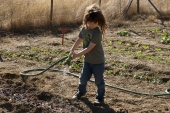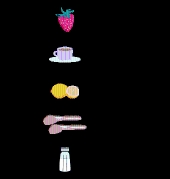




"People may doubt what you say, but they will believe what you do."




It's never too late to start! I retired to homestead on the slopes of Mauna Loa, an active volcano. I relate snippets of my endeavor on my blog : www.kaufarmer.blogspot.com








"People may doubt what you say, but they will believe what you do."




"Where will you drive your own picket stake? Where will you choose to make your stand? Give me a threshold, a specific point at which you will finally stop running, at which you will finally fight back." (Derrick Jensen)




Todd Parr wrote:Craig, I don't know that I would call it a form of hydroponics. He does it in regular raised beds in his yard that are filled with sawdust.
"Where will you drive your own picket stake? Where will you choose to make your stand? Give me a threshold, a specific point at which you will finally stop running, at which you will finally fight back." (Derrick Jensen)

|
Time flies like an arrow. Fruit flies like a banana. Steve flies like a tiny ad:
Freaky Cheap Heat - 2 hour movie - HD streaming
https://permies.com/wiki/238453/Freaky-Cheap-Heat-hour-movie
|


